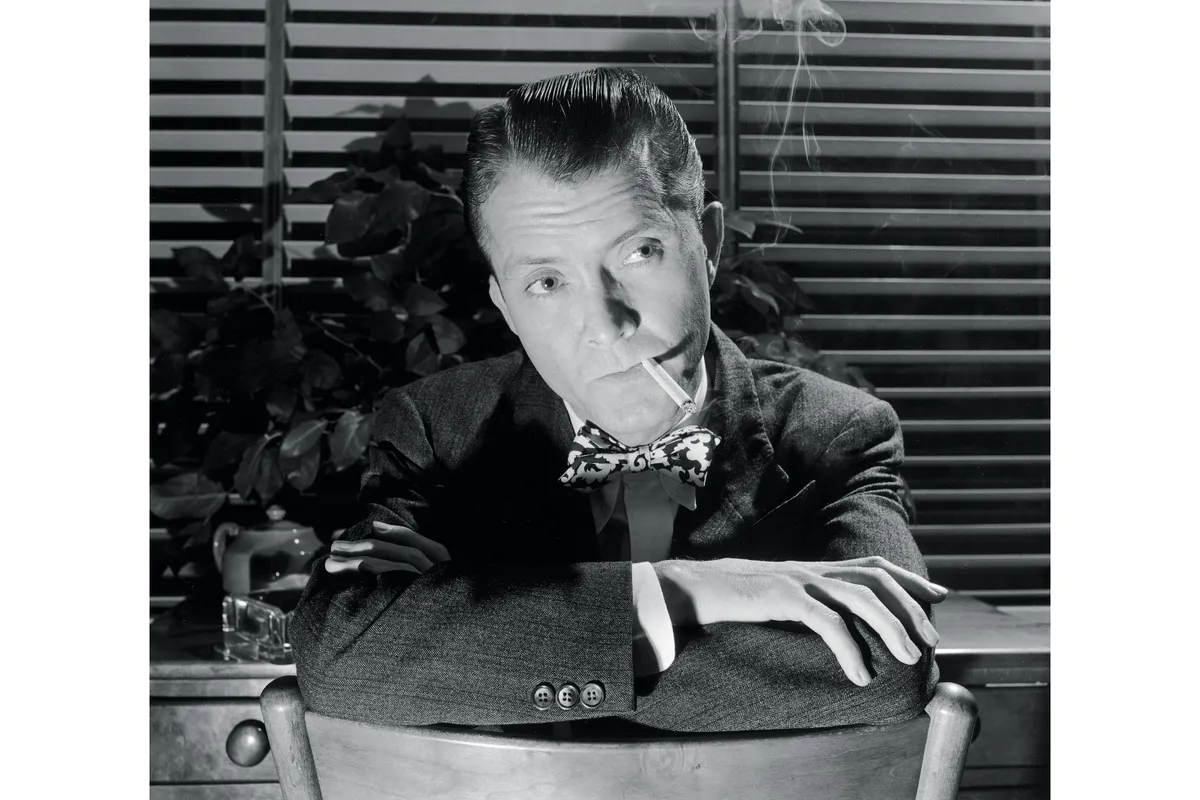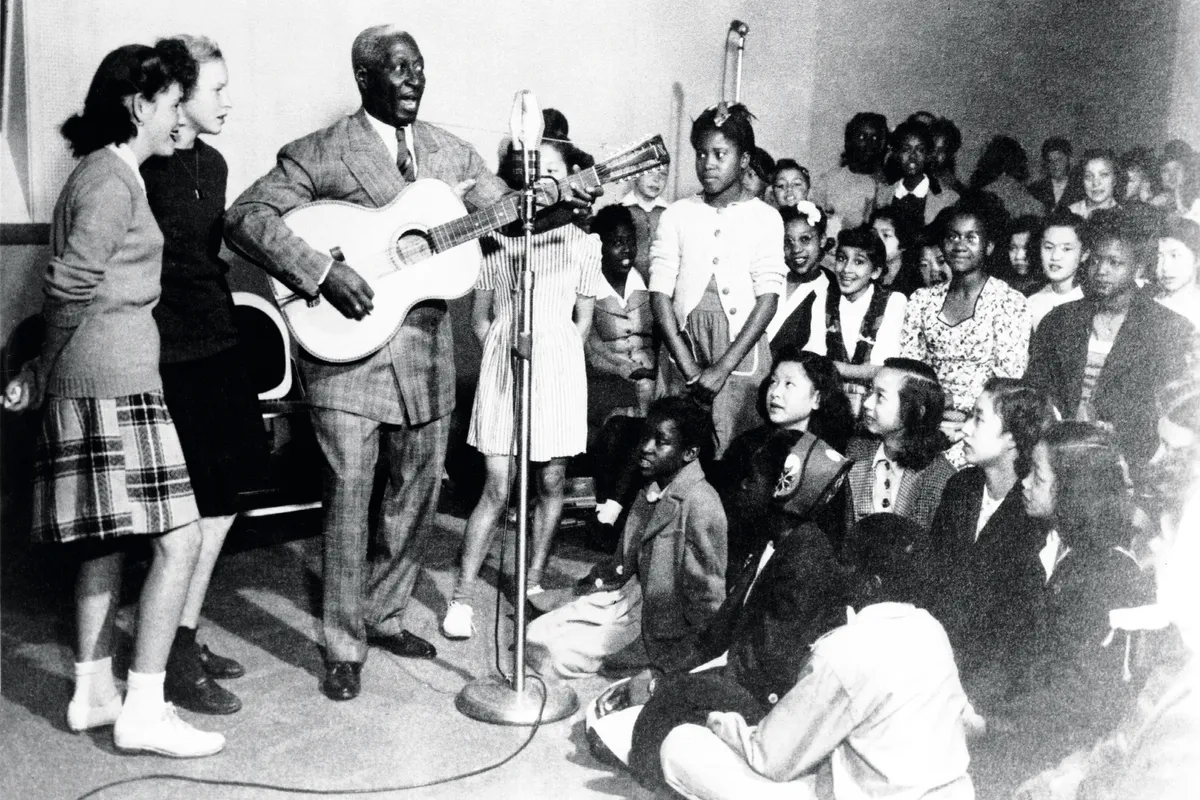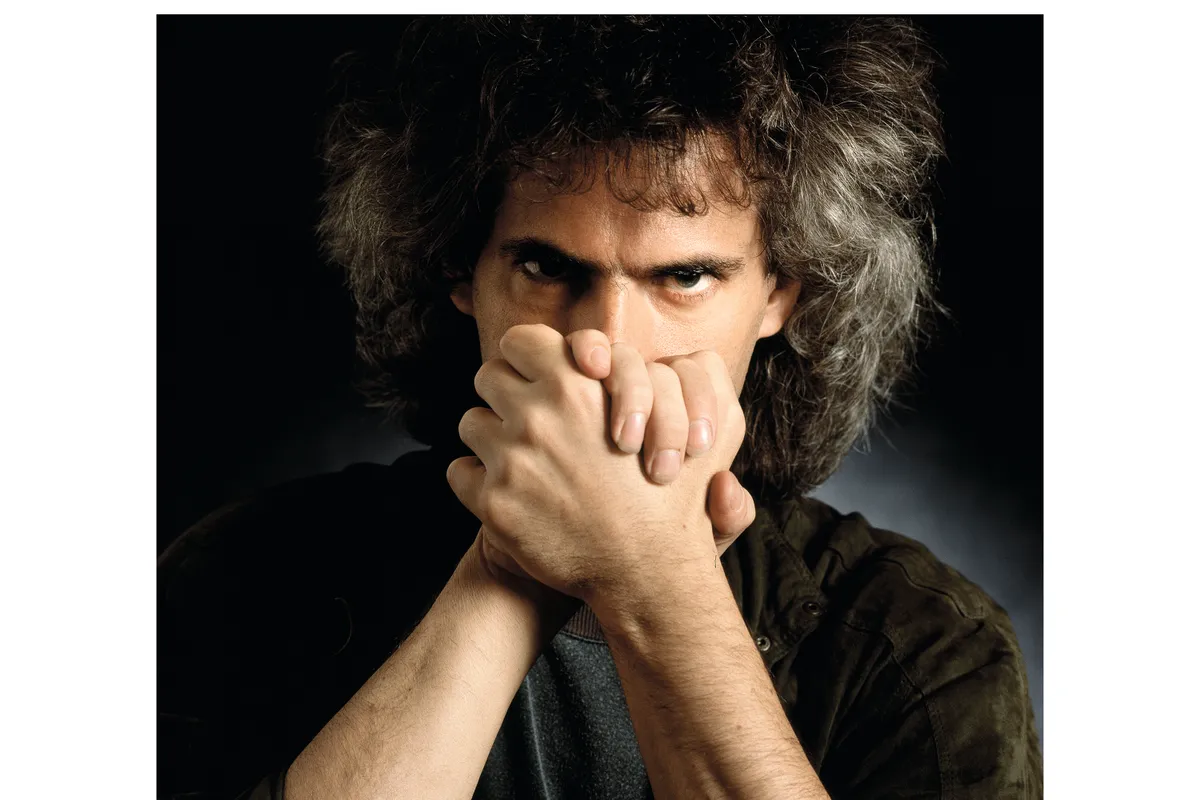Charlie Christian 1916-1942

For all his renown as the creator of modern-jazz guitar, Charlie Christian was a country boy. Steeped in the rich musical traditions of the American Southwest, he began to play almost as soon as he could walk, guiding his blind, guitarist father around Oklahoma City and entertaining with the family band. In his early teens, an encounter with tenor saxophonist Lester Young inspired him to cultivate single-note lines in the manner of a horn, rather than the guitar’s customary strumming.
- 15 best jazz trumpet players ever
- 28 best ever jazz pianists
- 25 greatest jazz saxophonists of all time
A crucial technological boost to Christian’s pioneering style was the development of amplification in the 1930s. By 1937, he was using an electric guitar and word of his extraordinary ability began to spread far beyond the local scene, leading to an invitation to audition for the King of Swing, Benny Goodman, in 1939. Despite an unfortunate first impression – Charlie appeared in a bright green suit with a purple shirt, yellow shoes and a ten-gallon hat – the new Benny Goodman Sextet came into being there and then. Jazz guitar would never be the same again.
Christian starred with Goodman for the rest of his short life (he died of tuberculosis in 1942, aged only 25) and the Definitive compilation, devoted to him, conveys the unique flavour of the sextet’s recordings. Regardless of tune or tempo, their pervasive mood is a kind of elation, which seems to stem directly from Charlie Christian’s presence. Every solo he plays, however brief, says something, with a captivating mixture of supple technique, bluesy authority and endless invention. You feel that his effortless flow of chromatic sophistication, twangy asides and visceral swing was constantly on tap.
After a night’s work with Goodman in New York, he would regularly head to Minton’s Playhouse in Harlem, where bebop pioneers such as Dizzy Gillespie and Thelonious Monk were changing jazz. Charlie Christian was a natural member of that company, and recordings made at Minton’s demonstrate the excitement of their discoveries. Some of those tracks are included in the Dreyfus set Swing to Bop, further evidence of why guitar giants such as Wes Montgomery have revered him.
Charlie Christian's best albums
Genius of the Electric Guitar
Definitive DRCD1128
Swing to Bop
Dreyfus 367152
Blues in B
Lechantdumonde 2741459/60
Eddie Condon (1905-1973)

It was famously observed that, though Duke Ellington played piano, his real instrument was his orchestra. Similarly, while Eddie Condon was a useful rhythm guitarist, he was a virtuoso of the spirit of Chicago jazz. Organiser, promoter, impresario, publican and publicist, he symbolised its carefree pleasures until his death in 1973.
Nearly half a century before, in 1927, he’d overseen its official birth, co-leading McKenzie and Condon’s Chicagoans on some pioneering recordings. The band comprised boyish enthusiasts such as Condon himself, galvanised by new music brought north by King Oliver and the New Orleans Rhythm Kings and determined to play it themselves. The results were rough-edged and extrovert, less Crescent City throb than Windy City thrash, but with an undeniable spiky charm.
If Chicago jazz epitomised the devil-may-care mood of the 1920s, it also looked forward to the ’30s: Chicago stars such as Benny Goodman and Gene Krupa spearheaded the age of the big bands. But Condon kept faith with his original passion, espousing both small-group spontaneity and the fun-loving, hard-drinking ethos that went with it. Leading groups in clubs, arranging record dates and concerts, he became a one-man mission for Chicago jazz and was rewarded in the ’40s when public interest revived in Dixieland. Condon was the music’s embodiment. A dapper figure with slicked-back hair, he was a celebrated wit, typically addressing a sparse audience as ‘Lady and gentleman’.
The music itself was first class, as you can hear in Eddie Condon: Windy City Jazz. Opening with the epoch-making sides of 1927, it showcases the talents of some of the best jazzmen of the 1930s and ’40s, freed from big band constraints. Hear the casual grace of trombonist Jack Teagarden, the warmth of cornettist Bobby Hackett, the barrelhouse elegance of pianist Jess Stacey, the gasps of clarinettist Pee Wee Russell, exploring blues and standards to their heart’s content.
In later years, the Condon style was often barbarised by amateurs, giving Dixieland a bad name. But he would be pleased with a record that so appealingly distils the best of his life’s work.
Eddie Condon's best albums
Windy city jazz
Topaz TPZ 1026
Only the Best of Eddie Condon
Collectables CCL1125.2 (4 discs)
Bixieland
Metronome 222967
Check out Eddie Condon on Spotify
Leadbelly c.1888-1949

The history of jazz has been marked by continuing debates regarding its essence and origins. Despite its link to folk traditions of the Deep South – the spirituals, blues and work songs of oppressed African-Americans – an African-American trumpeter of a later generation protested, ‘Jazz isn’t folk music: it’s too hard to play’. Nonetheless, as jazz has grown more sophisticated, drawing on the expressive complexity and subtlety of its European side, there have been periodic calls to ‘get back to the roots’, the emotive legacy of ordinary people pouring out their feelings, immediate and intense.
There has been no more potent embodiment of that spirit than the singer Huddie Ledbetter, known as ‘Leadbelly’. Ordinary he wasn’t: born in rural Texas in c.1888, regal in bearing and strong as an ox, he claimed to be the world’s greatest cotton picker, railroad track layer, lover, drinker and guitar player. His pride was matched by a temper and disposition to violence, resulting in spells in prison for assault and murder. And it was in 1933, in the Louisiana State Penitentiary, that he was discovered by folksong collectors John and Alan Lomax. Under the sponsorship of the Lomaxes, Leadbelly began his rise to stardom, benefiting from the gathering vogue for trad jazz and rugged authenticity. He gave concerts across the US and Europe, dying in New York in 1949. Though the strictest arbiters exclude his work from the jazz canon, it’s hard not to recognise his vital link to the essential force of the music.
Leadbelly’s recorded legacy is full of good things, with his singing, playing, chanting and talking, accompanying himself with handclaps as well as the mesmeric thunder of his 12-string guitar. On the Topaz compilation vintage blues abound, from the wailing ‘Good Morning Blues’ to the sardonic reflections of ‘Bourgeois Blues’. And there are the numbers which became classics of the folk movement – ‘Midnight Special’ and ‘Rock Island Line’, a skiffle hit for Lonnie Donegan in the ’50s. But Leadbelly’s version puts any other in the shade, through the freedom and force of his musical personality. As long as these qualities matter, jazz should be proud to welcome this mighty branch of its family tree.
Leadbelly's best albums
Good Morning Blues
Topaz TPZ 1029
Definitive
Notnow NOT2CD261
Leadbelly Live
Fabulous FABCD105
Checkout Leadbelly on Spotify
Pat Metheny b.1954

Despite winning a global crossover audience and influencing legions of guitarists, Pat Metheny has described himself as a fusion ‘reactionary’. He deplores what’s often thought of as jazz-rock – bogus intensity, raunchy distortion and interminable one-chord solos. Fusion Metheny-style is lyrical, many-sided, an extension of his quest for maximum expressive scope and his sound: a warm, focused attack, with a kind of soaring radiance enhanced by his innovative use of electronics. A Metheny solo is a flood of melody, a mixture of ecstatic vision and consummate technique.
- What instruments make up a jazz band?
- Six of the best: jazz cameos in pop
- Six of the Best… Jazz hit singles
His musical passion comes from his origins. He was born in 1954 to a brass-playing Missouri family, in a small town where country and western was king. By the mid 1960s he was a self-confessed ‘music freak’, being equally ‘destroyed’ by The Beatles film A Hard Day’s Night and Miles Davis’s ‘My Funny Valentine’. Beginning on trumpet, he switched to guitar, and by the age of 15 he had a six-night-a-week gig playing bebop with a top Kansas City combo. He enrolled at university, but was promptly appointed guitar instructor and in 1973 began teaching at Boston’s Berklee College of Music. The next year he completed his whirlwind ascent by joining Gary Burton’s seminal band, where he stayed for three years before forming his own Pat Metheny Group, which toured the world to huge popular acclaim and still does.
Metheny’s success was a result of virtuosity and opportunity. Here was a guitar-led band which projected the force and texture young audiences associated with rock, but offered both a deeper emotional and intellectual appeal. Over the years, Metheny has continued to pursue his personal taste and unique sound in myriad directions. His selection for ECM’s rarum series, drawn from his recordings for the label from 1975-84, compounds folk, country, bebop, blues and Brazil, with the creative assistance of his long-time keyboard partner and fellow melodist, Lyle Mays.
Through his career, Metheny has periodically returned to jazz formats, as in his recent Grammy-nominated CD, Day Trip. But he would probably say it’s all fusion – which is another word for music, desire and delight.
Pat Metheny best albums
Pat Metheny Selected Recordings
ECM 014 1632
Day Trip
Nonesuch 7559799561
Orchestrion
Nonesuch 7559798473
Read our reviews of the latest jazz recordings here